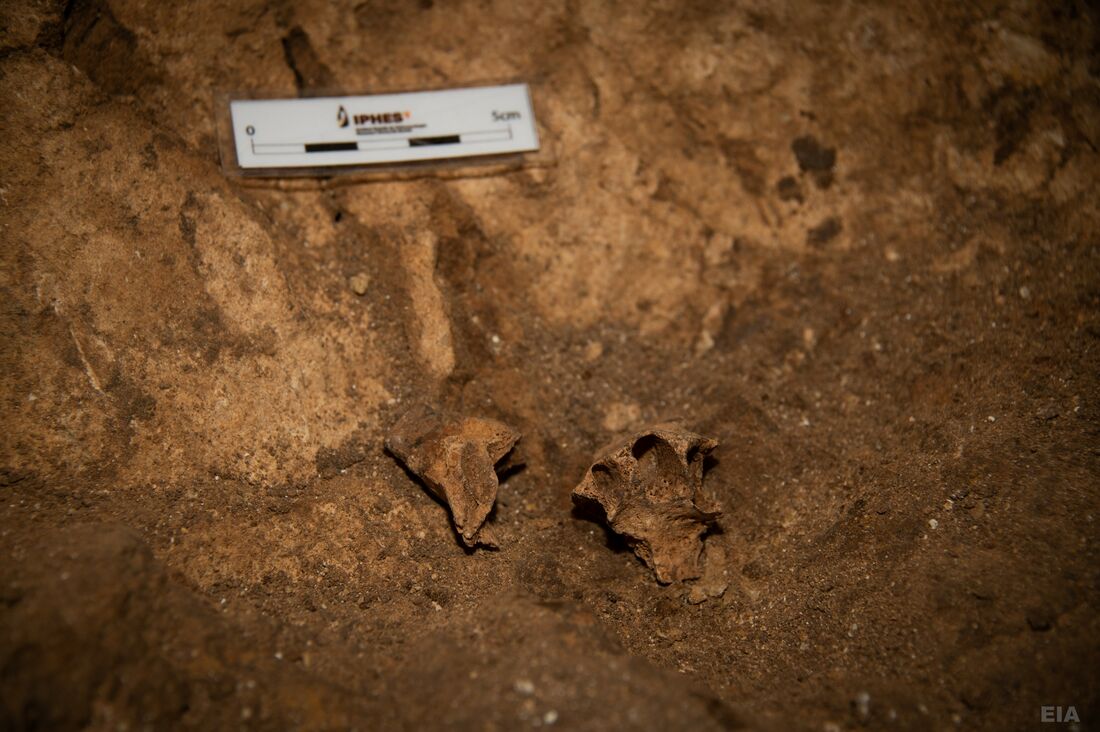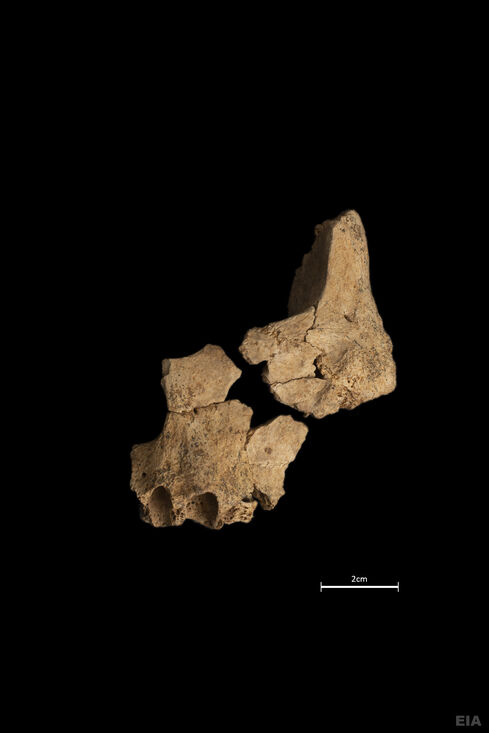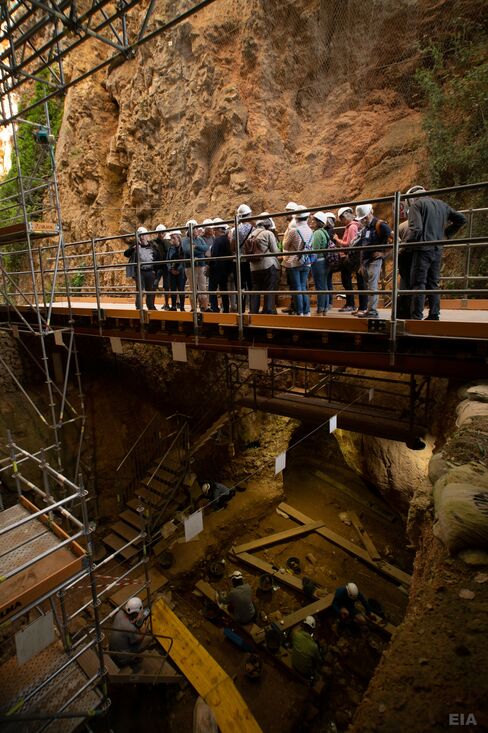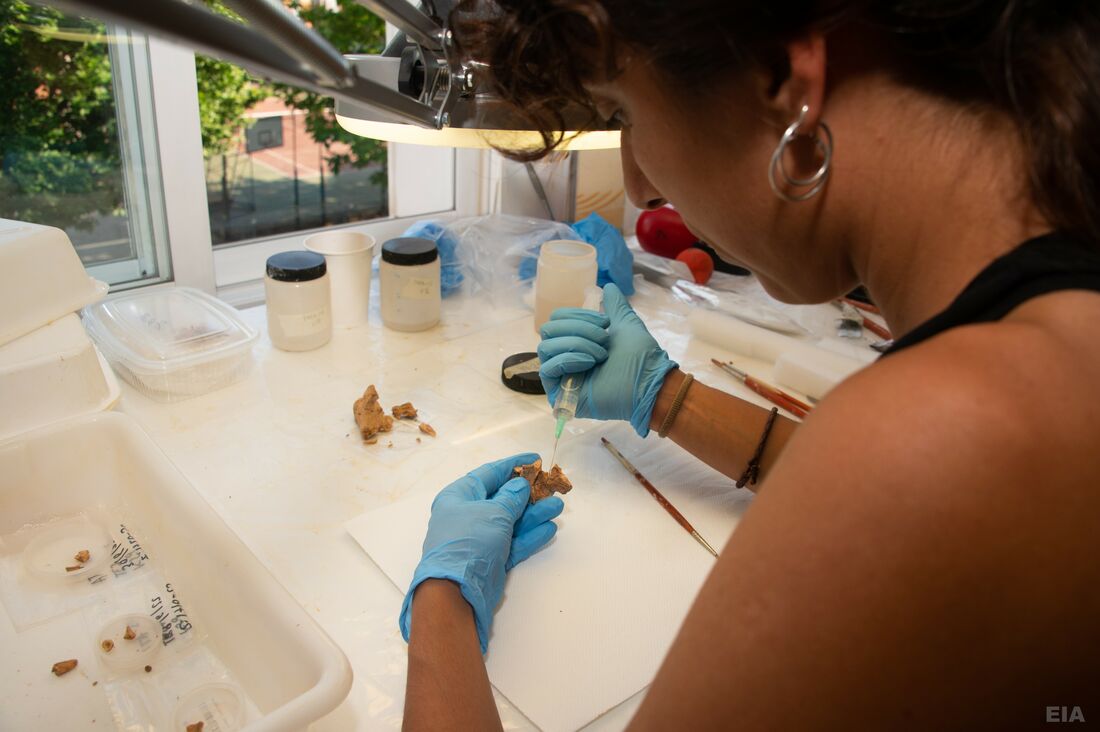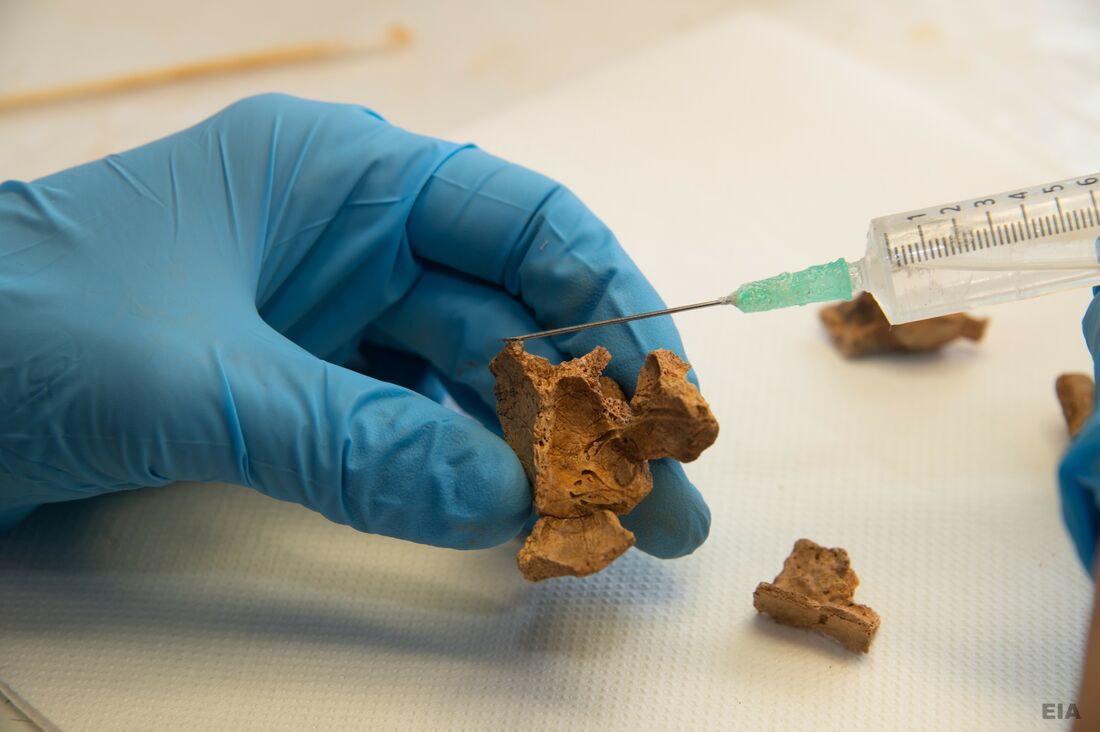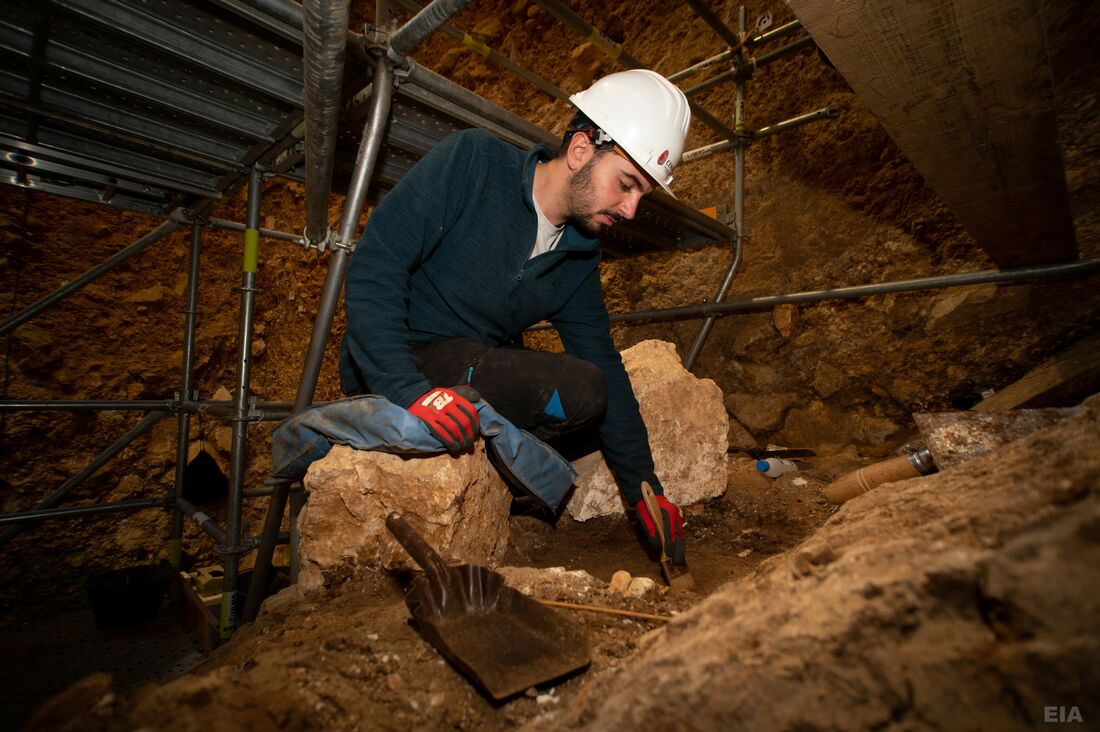New 1.4 million-year-old human remains appear at the Atapuerca site
The remains of a human jaw at the Sima del Elefante site will allow us to understand the origin of the modern face
A new human fossil discovered at the Sima del Elefante site in the Sierra de Atapuerca was presented today by the co-directors of the Atapuerca Project, Juan Luis Arsuaga, José María Bermúdez de Castro and Eudald Carbonell, Sima del Elefante site researcher and coordinator Rosa Huguet, and the Castilla y León Regional Minister for Culture, Tourism and Sport, Mr. Gonzalo Santonja.
The first week of July 2022 will enter the history of human evolution. Excavation on Level TE7 of the Sima del Elefante cave site has yielded an extraordinary surprise discovery: the partial face of a human being whose age could be roughly 1.4 million years. For the last couple of decades, discoveries on Level TD6 of the Gran Dolina cave site have prompted members of the scientific community to debate the most coherent evolutionary model to explain the origin of the modern face.
Homo antecessor, estimated to be 850,000 years old, has the oldest recorded modern face in human history to date. But when did a face like ours emerge? This new discovery at Atapuerca gives us a unique opportunity to make progress on the answer to this question.
One of the aims of this year’s Atapuerca digs was to continue the work begun in 2021 on the upper part of Level TE7 in Sima del Elefante. The importance of this zone is due to its position, near one of the main entrances to the cave. The previously dug levels at the site have systematically yielded a greater diversity and abundance of remains in this zone than the rest. That is why we have been working on this area right from the start of this year’s digs. On June 30, Edgar Téllez, a member of the Atapuerca Research Team, detected several bone remains enveloped by clay in Quadrat K29 on Sima del Elefante Level TE7. After cleaning and scrutiny by several of the team’s specialists, we can now confirm that the remains are from a human jaw.
The human fossil from Sima del Elefante was found about two metres below the mandible unearthed in 2007 on Level TE9, which was assigned to Homo spp., an indeterminate species due to a lack of conclusive data. It is quite likely that the newly discovered fossil is related to the previous jawbone, and is from one of the first peoples that colonised Europe. If this is so, we will finally be able to determine the identity of the Sima del Elefante human species. It will also allow us to make a detailed comparison between the newly discovered face from Sima del Elefante and Homo antecessor, and to further investigate the origins of the latter species, described 25 years ago by the Atapuerca Research Team.
Geological samples are currently being taken to estimate the age of this human fossil from TE7 at the National Human Evolution Research Centre (CENIEH) in Burgos. Several stone tool items and fauna remains bearing evidence of consumption by humans associated with the discovery will be analysed at the Institute of Human Palaeoecology and Social Evolution (IPHES) in Tarragona. The identification of the vertebrate fossil species discovered on this Level will provide us with an accurate image of the ecosystem inhabited by Europe’s first humans and its climate.

